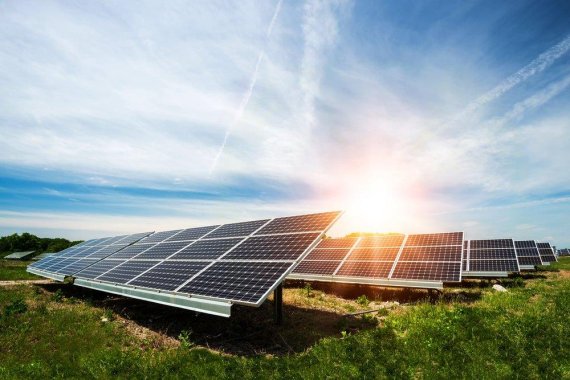© Shutterstock
SAW’s criticism refers to the plans by LC Energy to lay down solar meadows on WUR grounds – at the Haarweg in Wageningen and the Langesteeg in Bennekom, of five and ten hectares, respectively. The plans have led to some controversy (article in Dutch). Possibilities for expansion of a solar field near the Sinderhoeve in Renkum are also being investigated. The field currently contains 84 solar panels.
Alternatives
SAW chair Giulia Homs claims WUR is ‘hypocritical’ when it comes to sustainability. ‘Either nature or agriculture are being sacrificed to generate solar power, while it could be done in other places as well. Why are the roofs on campus not covered? There are plenty of buildings at the business park that do not have solar panels yet. Those possibilities should be investigated first.’
WUR is doing just that, according to energy coordinator Michiel van de Wal’s reaction. ‘There are currently 1340 solar panels on the annexes behind Radix and more than 450 solar panels on the new sports hall of De Bongerd. A request for funding for Zodiac had been running this past year but was unfortunately rejected, which means that this project is temporarily at a standstill. However, solar panels will be installed on a new annex of Vitae, the Rikilt building and the Netherlands Food and Consumer Product Safety Authority [NVWA] this year still. And another 4500 solar panels will be placed on the roofs of several WUR buildings in Lelystad.’
Reducing energy usage
Without subsidies, investing in solar power is not profitable, Van der Wal explains. ‘When subsidised, the energy payback time is eight to ten years; without subsidies, we are looking at some twenty years. In that case, it is better to look at alternatives, such as reducing energy usage. An important focus point for WUR regarding reducing energy usage in the next few years is the use of natural gas.’
Furthermore, many buildings on campus are not suitable to generate solar power due to windowed roofs or technical installations being placed there, Van der Wal explains. The constructions and roofing are not always suitable either.
Besides, the impact of a solar meadow is much more significant, says the energy coordinator. The municipality of Wageningen has a stringent climate ambition (document in Dutch) and aims to be climate neutral by 2030. WUR supports this ambition. This is why we are making areas that we cannot use ourselves available for solar meadows.’
According to the Wageningen climate plan, 30 hectares of solar fields should arise before 2021. Van der Wal: ‘If we were to use all the roofs of the suitable WUR buildings, we would have about two hectares. With the solar meadows in view, we will get to fifteen, which is already half of Wageningen’s goals for 2021.’
Along the motorway
According to Homs, solar meadows are ‘the easiest, but not necessarily the best solution.’ If solar meadows cannot be avoided, she would rather see them along the motorway. ‘Many people drive there, and they will associate solar panels with Wageningen. This way, agricultural fields would not be used, and the university would gain its green name once more.’ Van der Wal: ‘That would be a great initiative, but WUR simply does not own any land along the motorway. If we had that possibility, we would obviously do that.’
People can react (document in Dutch) on the concept allocation plan for the Solar Park Haarweg until 18 July 2018.
Additional reading:
18,000 solar panels on Haarweg
400 Solar panels on new sports hall

 Photo Shutterstock
Photo Shutterstock